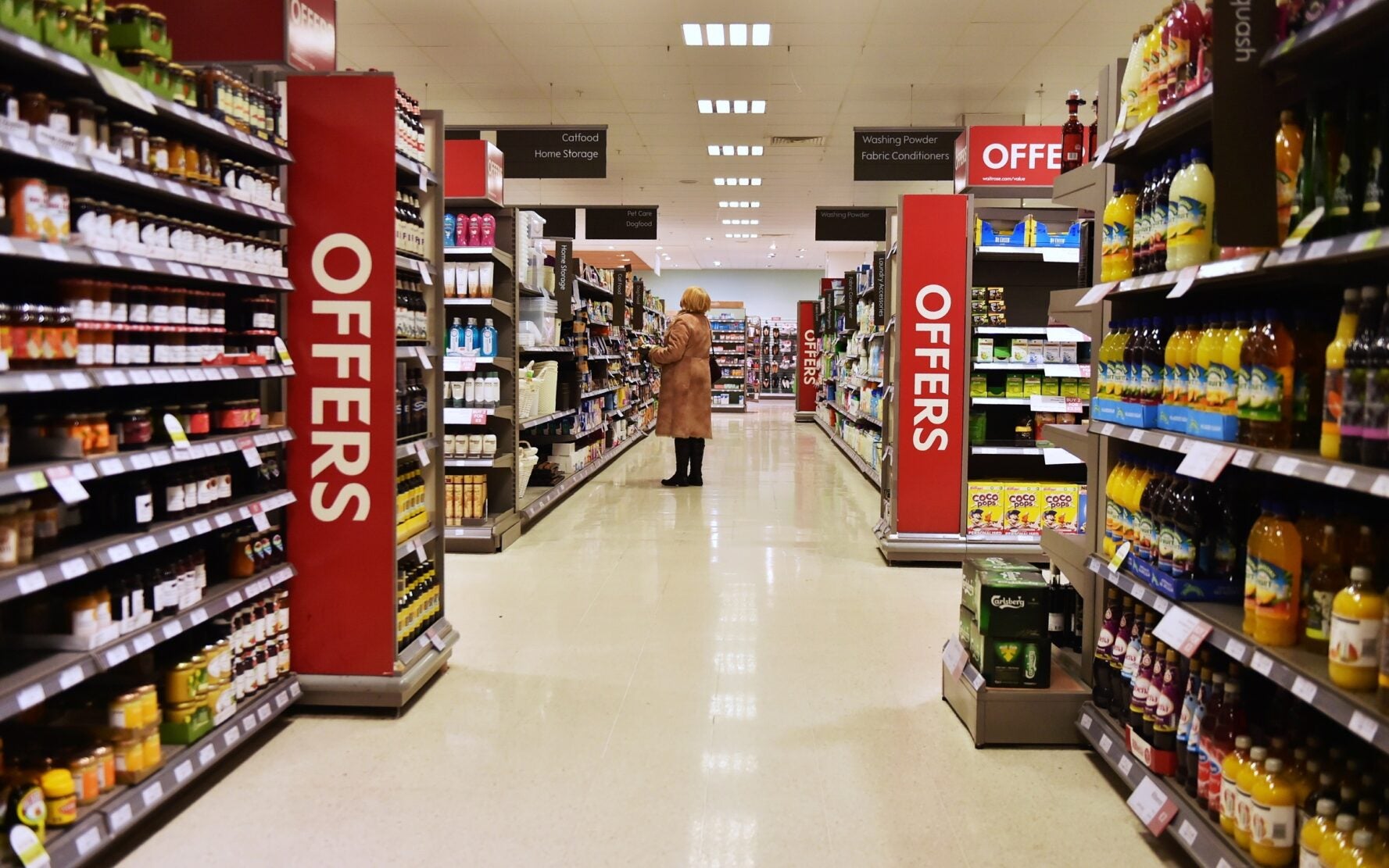[ad_1]

January saw a notable decline in UK food prices, which fell on a monthly basis for the first time since September 2021.
For food alone, the CPIH measure compiled by the Office for National Statistics (ONS) dropped 0.4% last month compared to January 2023. The index was also down by the same magnitude when non-alcoholic beverages are included, versus a 0.6% increase a year earlier.
In the whole UK grocery segment encapsulating food and soft drinks, the annualised rate of CPIH inflation eased for a 10th straight month, having broken through the double-digit barrier in November.
That measure came in at 7%, down from December’s 8% rate and was the lowest level since April 2022. It peaked at 19.2% in March 2023, the highest in more than 45 years.
There was also a bright note for alcoholic beverages and tobacco, albeit CPIH prices for those categories remained in double-digit territory – 12.2% in January versus 12.8% in the same month last year. They eased to 2.2% from 2.7% on a monthly basis.
Balwinder Dhoot, the director of sustainability and growth at UK industry body the Food and Drink Federation, said the pullback to 7% was “encouraging” but noted the burden on manufacturers from the living wage increase.
Access the most comprehensive Company Profiles
on the market, powered by GlobalData. Save hours of research. Gain competitive edge.

Company Profile – free
sample
Your download email will arrive shortly
We are confident about the
unique
quality of our Company Profiles. However, we want you to make the most
beneficial
decision for your business, so we offer a free sample that you can download by
submitting the below form
By GlobalData
Dhoot added: “Any reduction is important to households struggling to afford higher food bills, and for business who are paying higher salaries at a time when they are continuing to streamline production costs to deliver competitive prices for shoppers.
The comments came with yet another warning over the risk of resurgent inflation from shipping diversions around the Red Sea and the ongoing conflict in Gazza.
“Ongoing navigation challenges in the Red Sea, coupled with rising shipping costs, may soon exert pressure on energy prices, and, therefore, on food prices, given the energy-intensive nature of the food and drink industry,” Dhoot said.
“The extent of this impact hinges on the duration of ship diversions from the Suez Canal and any escalations in the Middle East.”
Delving into the food and soft drinks category, the ONS said the further easing in prices was led by bread and cereals, which dropped 1.3% on a monthly basis in terms of the CPIH, from an increase of 0.2% a year earlier.
Of the 11 category classes tracked, seven went down in price while the others were unchanged, the agency said. Leading the southward slant were crisps, cooking sauces and instant coffee.
Despite the further easing in UK grocery prices, the ONS once again flagged, as it has in the past few months, that costs are still historically high in comparative terms.
“The overall price of food and non-alcoholic beverages rose by around 25% over the two years between January 2022 and January 2024. This compares with a rise of around 10% over the preceding ten years,” it said.
Meanwhile, the CPI rates in food and soft drinks largely tracked the CPIH measure, cooling to an annualised rate of 6.9% from 8%. The CPI also fell 0.4% versus a 0.6% increase a year earlier.
The annualised and monthly rates for alcohol and tobacco were 12.4% and 2.2%, respectively, compared to 12.9% and 2.7%.
Unlike UK grocery, annualised headline rates of inflation were unchanged in January at 4.2% for the CPIH and 4% for CPI. The former again dropped 0.4% on a monthly basis, while the latter declined 0.6%.
[ad_2]

